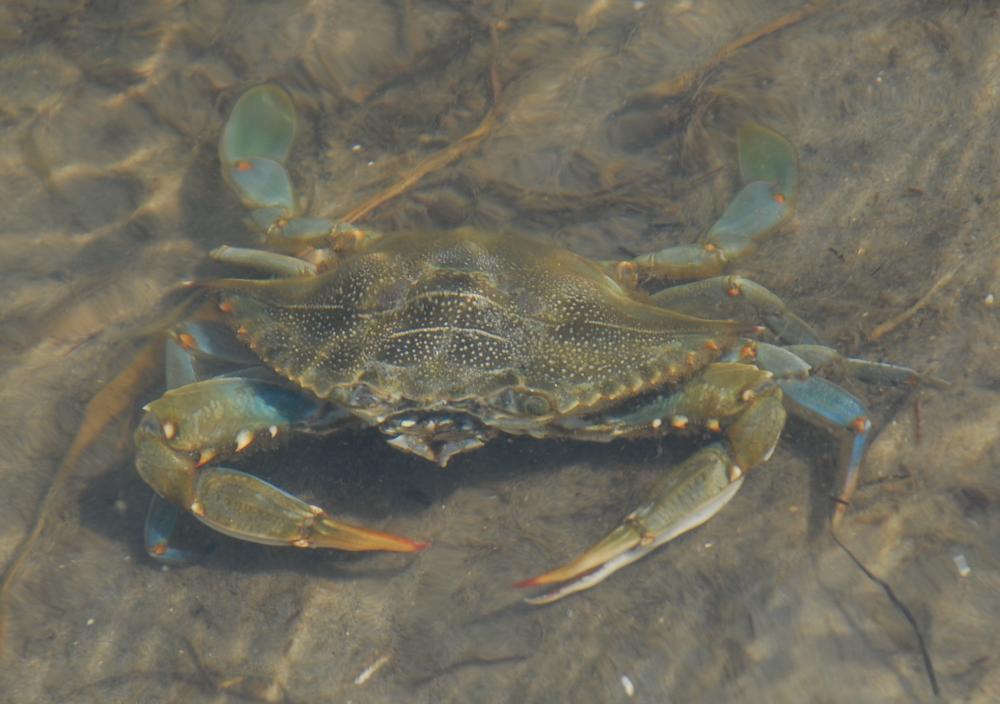Blue crab abundance has decreased from 2017 but remains near its long-term average level, according to results from a closely watched survey released on April 9.
The annual winter dredge survey showed that the total number of crabs and the number of spawning-age females are down from last year, while the number of juveniles has ticked upward.
Results would have been better, scientists said, had it not been for the lethal toll extracted by a cold winter. They estimated that cold conditions killed 16 percent of the adult crabs in Maryland and 8 percent in Virginia — where most of the crustaceans overwinter.
Managers in both states said that continued cool temperatures through the spring would likely result in a slow start to the harvest season, but catches would likely pick up later in the year.
Maryland Natural Resources Secretary Mark Belton said the population “remains healthy, resilient and sustainable.”
Virginia Natural Resources Secretary Matthew Strickler credited management improvements over the last decade with “allowing sustainable harvests even in years with challenging environmental conditions.”
The 2018 dredge survey estimated that the Bay has:
• 371 million crabs of all sizes, down from 455 million last year, but still ranking sixteenth highest in the 29-year history of the survey.
• 254 million juvenile crabs, up from 168 million last year, ranking twentieth in the survey’s history.
• 147 million adult female crabs, a decrease from 254 million last year, but the ninth highest in the survey’s history.
The number of females remained below the 215 million target set by fishery managers, but was still more than double the 70 million minimum deemed necessary by scientists to maintain a healthy stock.
Overall, the survey results were “well within the normal variation” for the stock, according to Robert O’Reilly, chief of fisheries management with the Virginia Marine Resources Commission.
Blue crab populations can vary widely from year to year because the species is heavily influenced by climate conditions — juveniles spend the first several weeks of their lives drifting in the ocean after they are spawned during the summer and fall, and weather conditions at that time of year greatly affect the number that return to the Bay.
To boost the number of crabs after a decade of low survey numbers, management agencies since 2008 have imposed regulations offering greater protection to female crabs, in the hope that more would survive and reproduce. Although numbers have fluctuated, the overall abundance has trended generally upward since then.
Chris Moore, a fisheries scientist with the Chesapeake Bay Foundation, said those fishery management efforts are paying off. “Despite this winter’s cold temperatures, the Bay’s blue crab population remains healthy,” he said.
The winter dredge survey has been conducted annually since 1990 by scientists in Maryland and Virginia, who tally crabs dredged from the bottom at 1,500 sites across the Bay from December through March — when they are buried in mud and stationary.
Historically, the survey has provided an accurate snapshot of crab abundance and is the primary tool for assessing the health of the crab stock.
by Karl Blankenship
Karl Blankenship is editor of the Bay Journal and executive director of Bay Journal Media. He has served as editor of the Bay Journal since its inception in 1991.



[…] Chesapeake Bay Blue Crab Population Remains Stable – They estimated that cold conditions killed 16 percent of the adult crabs in Maryland and 8 percent in. […]